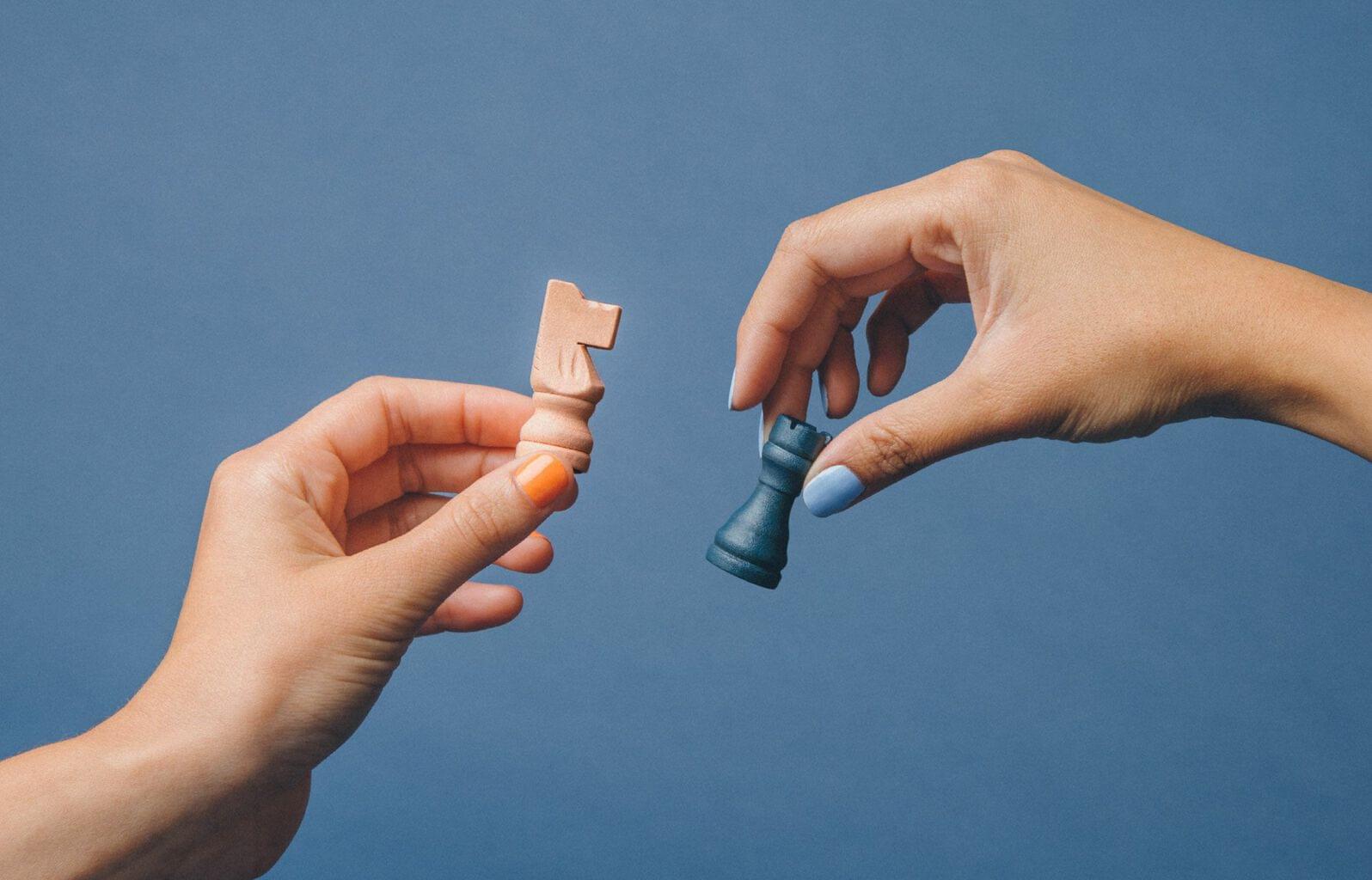Article • 11 min read
What is customer experience design? Benefits, examples, and tips
A well-designed customer experience helps brands develop meaningful relationships with buyers, secure repeat purchases, maintain a positive reputation, and improve internal processes.
Par Kristi Runyan, Contributing Writer
Dernière mise à jour May 8, 2024
What comes to mind when we think of a good customer experience? The film Pretty Woman, of course—but not that scene where the high-end Rodeo Drive shop blatantly ignores Julia Roberts because she doesn’t look like their typical customer. The stellar customer experience moment happens a few minutes later when another store treats Roberts like a princess, giving her fabulous options and taking her wants and needs into consideration.
In 2022, support teams can’t afford to be like the first snobby boutique. They need to care about every single customer and lean on feedback and tools—like CRMs and customer journey maps—to offer a world-class customer experience (CX) and meet consumers’ increasing expectations.
What is customer experience design?
CX design refers to the process of positively shaping every interaction a consumer has with a business—from contacting customer service to browsing the company’s social media posts.
Companies use CX design to have high-quality interactions with people before, during, and after they become customers. To engage consumers across so many stages, support teams must understand every step of a buyer’s journey.
CX design vs. UX design: What’s the difference?

Customer experience and user experience (UX) can often be confused, but there’s a simple way to differentiate them: remember that UX is part of the overall CX design.
UX focuses on a customer’s interaction with a specific product or service, while CX encompasses all the possible interactions with a brand.
CX design is based on the overall picture of a customer’s journey and every touchpoint between a consumer and a brand—from the first time they see an ad or social media post to them making a purchase or contacting customer service. The way buyers feel about those interactions and the business itself are also part of CX.
A good UX design experience is making sure your website is designed in a way that makes it easy for visitors to navigate it, even if it’s one they’ve never used before.
Benefits of customer experience design
It’s hard to overstate the value of a well-designed customer experience. Good CX design helps brands develop meaningful relationships with buyers, secure repeat purchases, maintain a positive reputation, and improve internal processes.
Increases customer retention
Customers aren’t settling for mediocre service anymore. According to the Zendesk Customer Experience Trends Report 2022, more than 60 percent of consumers now have higher customer support standards after the past year’s crisis. You may not get a second chance to impress buyers, either—61 percent will go elsewhere after just one bad experience.
On the flip side, 81 percent say a positive customer service experience increases the likelihood they’ll make another purchase. And 90 percent will spend more money with brands that personalize their customer service.
You may not get a second chance to impress buyers … 61% will go elsewhere after just one bad experience.
A solid CX design helps you meet these expectations. Support agents take customer feedback into account to ensure their team and other departments make improvements across the board. This will help you keep customers happy and increase retention.
Aligns internal teams
A dependable CX design outlines who owns each stage of the customer journey, as well as policies and protocols for each touchpoint.
This designation makes customer management smoother for everyone, especially support agents. They’ll know how to respond, what action to take at any given time, and which team members and departments are responsible for certain stages.
Customer experience design examples
Wondering what a standout CX design looks like in practice? Check out these three real-world examples from top brands.
Bang Energy: A brand ambassador program builds trust with target customers
Bang Energy uses its brand ambassador program to foster long-term influencer relationships, which helps the company attract Gen Z consumers.
When Gen Zers see the influencers they follow are invested in a partnership with Bang Energy, they are more likely to trust the brand. Gen Z is Bang Energy’s target audience, and the company knows this younger generation prefers personalized content from influencers who are “normal,” not just celebrities.
Bang Energy bases its CX design on knowing what its ideal customer wants, which is authenticity. The results speak for themselves—the company generated $1.2 billion in sales between June 2020 and June 2021.
Robinhood: Transparency and simplicity keep people coming back
More than a year before Robinhood launched its stock trading app, the company used referral marketing to create hype and promote its message, resulting in nearly a million sign-ups.
Robinhood incentivized the pre-launch waiting process and turned it into a game of sorts. When you signed up, you were placed in a virtual queue, and when you referred a friend and they signed up, you moved ahead in the line. This increased your chances of gaining early access. The referral and sign-up processes were simple, too, which made people more likely to participate.
The company also built trust in its CX by updating followers frequently to tell them where the app was in development. For many customers, this transparency motivated them to try the product once it was launched.
Noom: Influencer and affiliate programs attract the right audience
After achieving a sales growth of more than 3,000 percent over four years, the weight loss app Noom can safely say it knows how to connect with its target customers.
This growth was largely driven by Noom’s influencer program. Instead of selecting influencers who were already in shape, Noom worked with people of various body types, which resonated more with consumers who were struggling with weight loss.
Compared to its competitors, Noom offers its affiliates more benefits for their referrals and link clicks. Noom also provides an attractive and user-friendly platform for affiliates to navigate.
The customer experience design process

CX design isn’t about guesswork—it’s about gaining a strong understanding of your customers and using that information to shape your brand’s touchpoints. Follow these steps to create a CX design that keeps customers at the forefront.
Free customer experience guide
Find out how to create great customer experiences that will lead to loyal customers and improved word-of-mouth promotion.
4 tips for building your CX design strategy
Building a good CX design is about seeing the big picture and delivering an authentic experience to your customers. Here are four ways to make this happen.
Build a cohesive view of your customer touchpoints

Customers want to feel understood, no matter what channel they’re using. Offer a consistent experience by centralizing your support team’s customer data and omnichannel communication in one CRM.
With a CRM, support agents can access all customer conversations across channels from a single dashboard. At the same time, agents can quickly access key information about a customer—from their past interactions with the brand to their product preferences—from profiles in the CRM.
Share the customer journey map

Once you create a customer journey map, share it with other departments so the company as a whole can deliver world-class experiences. When each team understands the customer journey, it’s easier for everyone to track touchpoints and deliver a consistently satisfying customer experience.
Say the support team discovers that most of the customers who become long-term advocates belong to the same membership tier. Your agents could pass this information along to the marketing team, who could promote that tier more heavily.Adopt internal and external knowledge bases

Customers are increasingly eager to solve their issues independently. According to our CX Trends Report, 69 percent of consumers prefer to resolve as many simple issues as possible on their own.
Empower your audience to find solutions by building a robust external knowledge base. Create resources that address FAQs and common troubleshooting requests. Plexus Worldwide, for example, knows its customers want the ability to access support at any time, so it offers helpful self-service options via a detailed knowledge base. This makes it easy for consumers to find what they’re looking for.
Along with self-service resources, create an internal knowledge base for support agents. This enables agents to provide quick solutions to recurring customer requests and deliver accurate, up-to-date information.Be adaptable to customers’ evolving wants and needs

The pandemic changed everything. Companies need to maintain a spirit of flexibility to be there for customers in ways that may not have occurred to them previously.
Train agents to be empathetic by role-playing hypothetical situations with difficult, emotional customers. You can also shadow agents’ calls and give them feedback afterward.
Harry’s went above and beyond for its customers by adding a crisis helpline to its homepage during COVID-19. By responding to current events that could affect its customers, Harry’s team showed its audience that they see them as people—not just buyers.
How to use CX design to optimize the customer journey
The customer journey represents a consumer’s state of mind and needs at every touchpoint in the buying process. Typically, these stages include awareness, consideration, conversion, retention, and advocacy. CX design plays an important role in each phase.
Awareness
How are you targeting potential customers? How are you connecting with your current ones? Answer these questions through your brand’s content to attract leads at this stage. Whether it’s through an ad or a social media post, you want to draw in existing and potential customers with valuable, product-agnostic information.
Consideration
When consumers are interested in your company and thinking about making a purchase, chances are they’ll visit your website to learn more. Keep potential customers interested by building a user-friendly website that answers FAQs.
You can also captivate prospects by creating helpful middle-of-funnel content—like reports, videos, and whitepapers—that highlights your product as a solution to their pain points.
Conversion
Whether a customer is purchasing a product from you online or in-store, the process must be seamless from start to finish.
Make sure the process of creating an account and checking out isn’t clunky or time-consuming. You should also send the customer follow-up communication after the purchase to keep them updated on their order status.
Retention
Once a customer receives their product or service from you, ensure there’s a way for them to quickly learn how to use it. This can be done via an FAQ page, a blog, or product video demos from influencers on social media.
It should also be easy for people to reach out to customer support with any questions or concerns—whether they’re on a laptop, app, or telephone. It can be a chatbot that pops up automatically or a dedicated contact page on your website; what matters is customers know where to go to get help. We all know the frustration that comes when we can’t find a way to speak to a human at a company we’re trying to contact.
You should also try to match customers with support agents who have the expertise to answer their questions.
Advocacy
Offer referral incentives to retain existing customers and gain new ones. The reward helps buyers feel like their input is valuable and—if it’s a discount—encourages them to continue spending money with your brand. And for new customers who receive the referral, you can start the relationship off on the right foot by rewarding them, too.
Create a consistent CX design with a customer experience platform
To successfully implement a customer experience design that sets you apart and keeps customers coming back, everyone on your team needs to embrace the CX design principles. Use a customer experience platform like Zendesk to help your team better manage interactions across the buyer journey and to deliver the type of support consumers want and expect.
